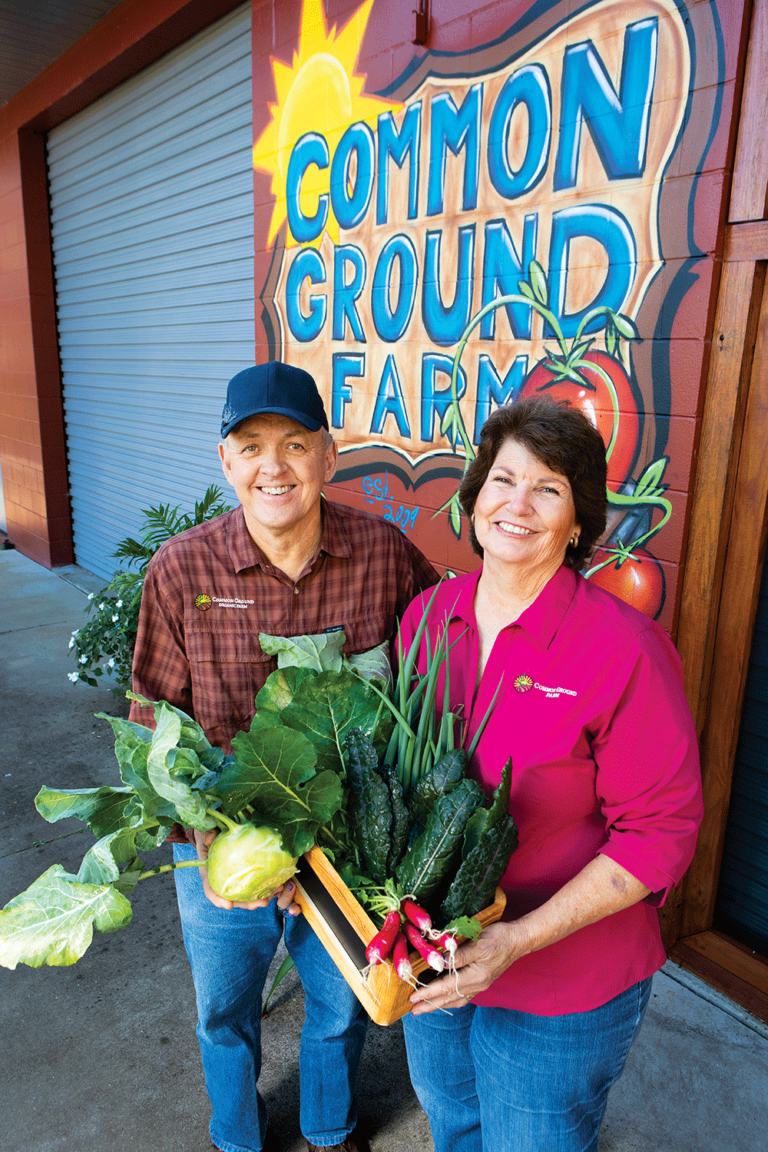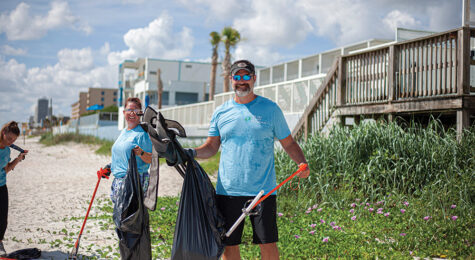Supporting Wellness in Greater Daytona, FL
A local food movement has far-reaching impacts on health and wellness in the region.

The Greater Daytona region promotes health and wellness through farm-to-table experiences as well as educational resources that invite students and residents to grow their own food. Community support for holistic wellness lifestyles ensures both educational and for-profit models are sustainable in the region.
Farm Fuel
Florida natives John and Pat Joslin started Common Ground Farm in 2003 after John’s encounter with cancer. Both Joslins are nurses with a combined 60 years of experience, and the health crisis gave the couple an impetus to refocus on healthy, organic produce as a staple in their diets.
John Joslin rediscovered his passion for growing things when he started an organic garden in his yard.
“People began tasting his vegetables and wanted to buy them and the rest is, as they say, history,” Pat Joslin recalls.
The couple says they are convinced modern health care should be more focused on promoting health. So, they began sharing their knowledge and experience to help others live healthier, more fulfilling lives while providing them with good, wholesome food.
In 2009, the couple formally launched Common Ground Farm as a for-profit, community-sustained agriculture (CSA) farm.
“While our produce is not certified organic, it is grown following organic standards without involving the bureaucracy and its exorbitant fees,” Pat Joslin says. “Only organic and natural fertilizers and organically certified pest or disease control products are used in the growing of the crops. No genetically altered or chemically treated seeds are used in planting.”
The Joslins say they take their role in the community seriously, providing local “clean food” to the region at comparable prices. They also support other local farmers by selling their products in the market, which supports the work of Common Ground Farm’s CSA.
“The market store carries a wide selection of products, which includes our vegetables and herbs. We proudly partner with more than a half-dozen other local farms in Central Florida, which allows us to offer a large selection of raw goat and cow milk products, as well as a large selection of cheeses, free-range eggs, microgreens, fresh fruit and locally raised beef, chicken and pork. In addition, we offer dried organic beans and grains, (hormone)-free butter, organic pasta, pasta sauce, Amish wedding products, pickled vegetables, jams, and an extensive collection of spices, seasonings and extracts.”
Pat Joslin, Common Ground Farm
Lettuce Learn
The City of Holly Hill established a $4 million recreational complex in Hollyland Park. But a strategic partnership with a local elementary school brought wellness full circle to rec patrons and pupils alike.
Pictona partnered with Holly Hill School to provide opportunities for students to use their community gardens to grow various vegetable, fruit and herb plants. The Children’s Garden yielded buttercrunch and red leaf lettuce mixes, cherry tomatoes, broccoli, cauliflower, milkweed, stargazer flowers, sunflowers, collards, strawberries and bell peppers, alongside herbs like oregano, rosemary, cilantro, parsley, chives, winter savory, lavender and spearmint.
“We, in tandem, also planted a smaller portion on campus for students that were not able to make it out to Pictona,” says Patricia Galbreath, STEM/science instruction educator for Holly Hill School. “For some students, this was the first time that they had actually worked in a vegetable garden or had contact with freshly harvested plants to prepare it for meals. Students and teachers worked together to decorate the outside of the planters there with a vegetable theme that included pollinators.”
In the classroom, students spend time researching the vegetables and fruits, including recipes. At meetings, students and instructors would create a tasting menu.
“This opportunity allowed students to connect the garden/farm-to-table experience,” Galbreath says. “For some students, they were tasting particular vegetables for the first time. Noticeable differences were made between ‘store bought’ and fresh-from-the-ground. Students were more willing to try certain vegetables because they had a personal connection with helping harvest and bag it.”
Furthermore, students would bring some of the harvested items home to their parents with the “homework” to try to prepare something as a family.
“A visible and hands-on connection was made to the interconnected systems for food production, including the importance of pollinators, soil nutrients, watering, plant parts and the edible part of plants, as well as protection from frost, planting and harvesting timelines,” Galbreath says.
Get to Know Greater Daytona
Want to learn more about living and working in Greater Daytona? Check out the latest edition of Livability Greater Daytona Region.



